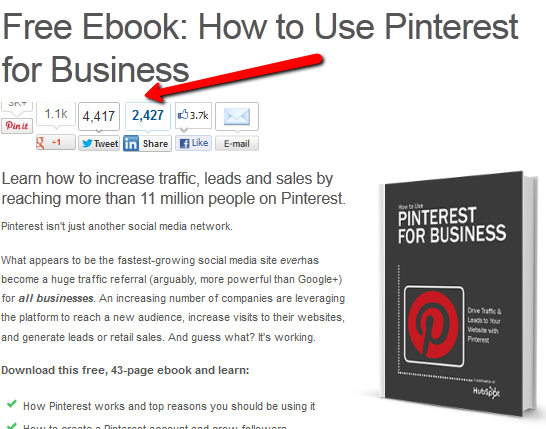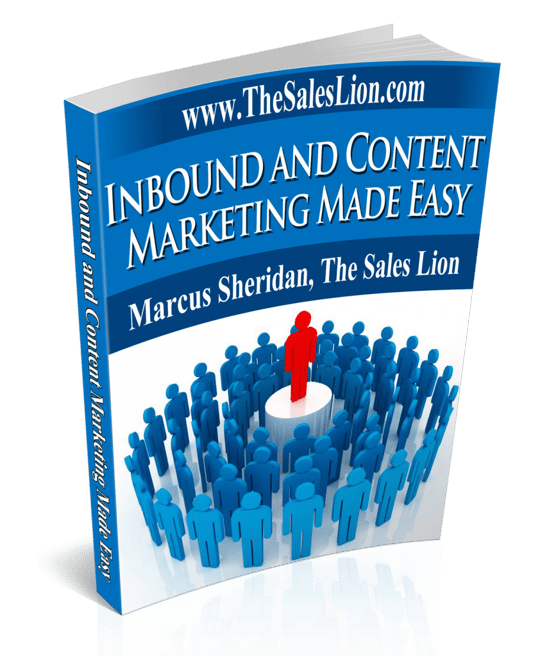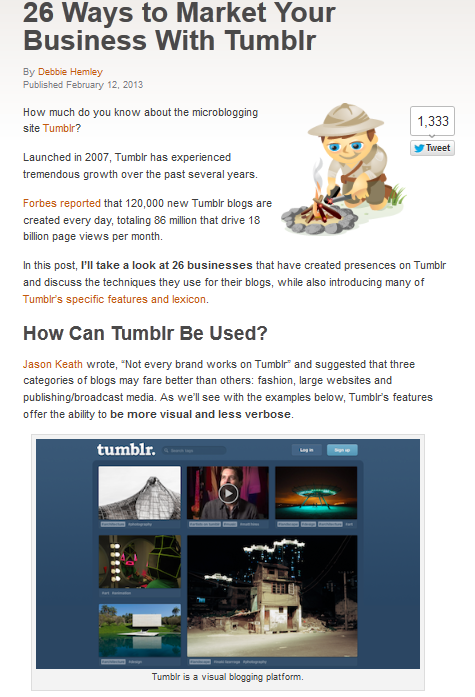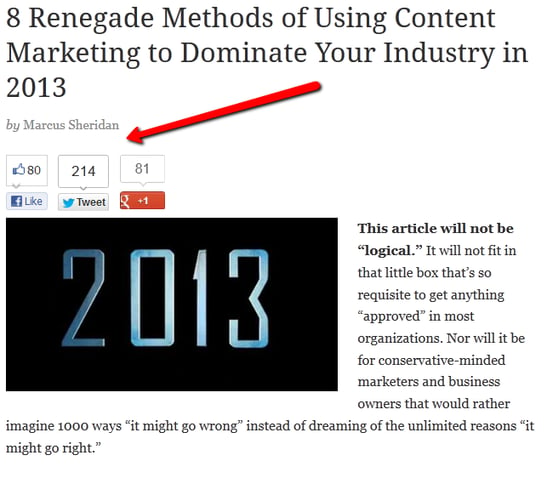Topics:
Content MarketingSubscribe now and get the latest podcast releases delivered straight to your inbox.
5 Reasons Long Content is a Content Marketing Best Practice

Feb 13, 2013

Marketing trends are a funny thing. What is “true” today is often “false” tomorrow. As an example, when blogging and content marketing really started to pick up speed over these last few years, many claims were made as to the most effective size and length of blogs posts/content. I’m sure you’ve heard a few of these statements in the past:
- “People don’t have the attention span nor time to read long blog posts…”
- “No one watches videos that are over 3 minutes, so always keep your videos short…”
- “The quicker the content, the better…”
And on and on and on.
At the same time, there have been others in the industry that have stuck with longer content and preached just the opposite of the “always keep it short” approach.
The truth is both styles of communication can work. Seth Godin averages about 200 words a post and Social Media Examiner is typically in the 1500 words range, but both sites are wildly successful models for content production.
This being said, if one looks at all of the changes happening around us and then looks ahead at where all of this is going, longer content and blogs will likely have more relevancy going forward, and here are 5 reasons why:
1. The Content Arms Race Likes Big Weapons:
I started talking about the “content arms race” over a year ago and more than ever I see just how aggressive companies and industries of all sizes are now starting to compete with each other and saturating their markets with content. As this happens, and companies are consistently putting out new articles, videos, eBooks, etc.—there is one main thing that separates the average from those that stand above—quality. And not only is the perception that longer content is of better quality, but generally speaking, length gives writers the opportunity to dive deeper and teach better on any given subject.
 Because they are in such a competitive space, HubSpot has spent a good bit of time over the last year producing content-rich eBooks to increase their pipeline, something that can be much more powerful than simply writing blog post after blog post.
Because they are in such a competitive space, HubSpot has spent a good bit of time over the last year producing content-rich eBooks to increase their pipeline, something that can be much more powerful than simply writing blog post after blog post.
Plus, ask yourself this question: If you were in a literal arms race, would you rather have 100 grenades or 100 missiles at your disposal? Yeah, I know, it’s not the most romantic analogy but it’s true.
2. The Focus of ROI (Return on Investment):
As those in marketing and sales start to understand the power of content as a sales tool, they’ll also begin to realize how bigger and better content, when consumed, can have a dramatic impact on consumers and potential clients.
Take my former eBook at The Sales Lion for example. A lot of people told me it would be silly to have a 250-page eBook because it’s too long and therefore turns off most readers. What these folks don’t understand, though, is the fact that I know the eBook is going to eliminate a lot of readers. In fact, I want that. Why? Because the eBook is meant for companies that want to dominate online through content marketing. And because they want to be the best, they’re willing to put the time into learning about how they can achieve these goals.
 250 pages may seem like too much content for some, but for me and my business, it's the key to deeply educating and then finding the right clients.
250 pages may seem like too much content for some, but for me and my business, it's the key to deeply educating and then finding the right clients.Because it’s a requirement that my clients read the eBook, it has become my greatest single sales tool, qualifier, and filter. It also ensures I’m working with great companies all the time.
And isn’t this exactly what every business wants?
3. More Visual Capabilities
It has now become an accepted fact that the more visual components an article or piece of content has the more likely it is to draw attention and be read. Going back to Social Media Examiner, you’ll notice that not only do they average over 1500 words per article as I mentioned earlier, but they also have at least 5 photos (and/or video) with every article as well. This is an editorial rule for SME writers and it’s a good one to have, as it ensures that visual and textual learners are able to consume information in their preferred method. This magazine-style approach is very calculated and effective, and it’s one of the main reasons why SME has about 200K subscribers despite the fact they’re just over 3 years old.
 As master of long content with multiple images, Social Media Examiner has gone from a "blog" to "digital magazine."
As master of long content with multiple images, Social Media Examiner has gone from a "blog" to "digital magazine."Looking at this more simplistically though, short articles don’t allow for as many photos and videos to be placed within a post. The natural ratio for a blog article/piece of content is this: 1 main idea= 1 main image
This is exactly why you’ll find a photo/image under each number(main idea) of this blog post—a pattern I picked up after guest writing for SME and something that makes a big, big difference in just how visually appealing an article is.
4. Penguin, Panda, and Google like Big Content
When Google updated their algorithm in 2012 with Penguin and Panda, the whole web was turned on its head. Many of the most disgraceful SEO practices were now coming back to haunt companies that had danced with the devil, and a new era of “content quality” was born. Furthermore, when one really understands how search engines work, they also understand that "time on site" and social shares are becoming more important metrics of SEO success.
Look at it this way: If Google has a choice to show two articles for the same keyword, which one are they going to choose:
The one where readers average 45 seconds on the page or the one where readers average 4.5 minutes on the page?
Now granted, this is just one of many factors that dictate search engine rankings, but I’m sure you understand my point.
Google wants to show great content that delivers their users a delightful experience. That’s their goal. And longer content that does a deep dive into a subject certainly has a better chance of meeting this goal. (Again, there are always exceptions, but you get my point.)
To learn more about Penguin, Panda, and where all of this is heading, check out this video from Google's Matt Cutts:
[youtube]https://youtu.be/b7W0o65tTIQ[/youtube]
5. Longer Content Gets More Social Shares
I’m going to ask you a question, and you’ve got to be honest: Have you ever looked at a really long piece of content, skimmed it because you simply didn’t have 10 minutes to read it, but still shared it because you “felt” like there was a lot of value there?
Yep, I bet you have. So have I.
Guilty as charged.
 This post took over 8 hours to write and was over 2500 words, but the time was worth it, and was more effective than if I had written 5 other posts of little size and minimal impact.
This post took over 8 hours to write and was over 2500 words, but the time was worth it, and was more effective than if I had written 5 other posts of little size and minimal impact.
When people sense that an author has spent a lot of time creating value, they are much more likely to share it than they would if it was a smaller post—even one of equal “quality.”
90% of my most shared posts were more than 1200 words, even though about 50% of my articles were less than 1200 words. Although I’d like to think the articles I’ve written that weren’t as long were still good, the fact cannot be ignored that there is a direct correlation between length of content and social sharing—a reality that many businesses and bloggers are starting to take note of.
And as I mentioned in #4, because search engines are starting to use social as part of their algorithm (I think this is a dumb idea btw but time will tell), more and more companies are going to do anything they can to get an edge when it comes to search engine rankings, and social appears to be a part of that unending battle going forward.
Your Turn
As I mentioned earlier in the article, I’m not saying here short content is bad, as quality and results come in all sizes and will always be the most important factor. Plus, many industries still have such little content (low content saturation index) that doing anything at all will make a company a frontrunner. That being said, would you agree that the trend in content marketing is that of longer, meatier content? Also, what other reasons would you add to the five above?
Jump in folks, let your voice be heard.


Order Your Copy of Marcus Sheridan's New Book — Endless Customers!